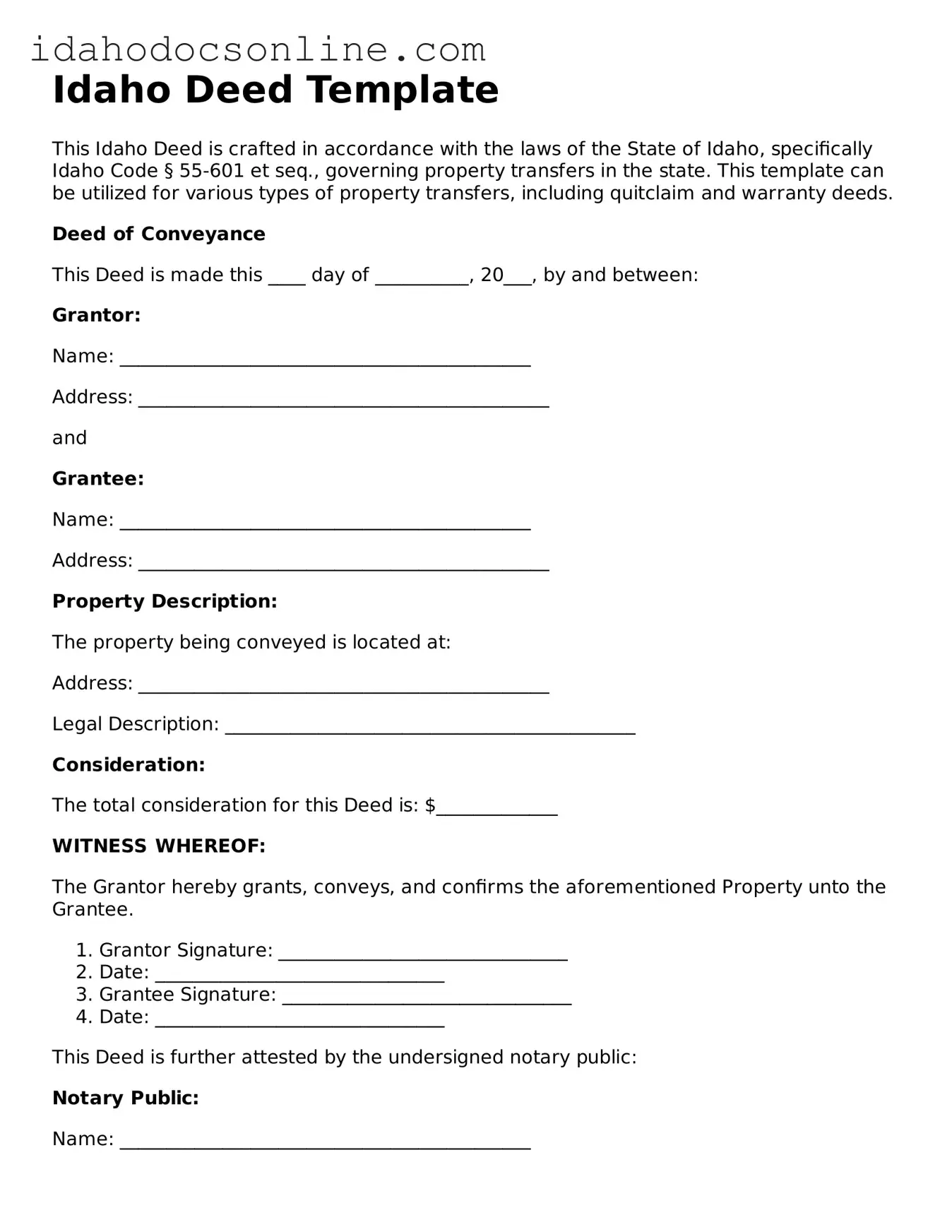Idaho Deed Template
This Idaho Deed is crafted in accordance with the laws of the State of Idaho, specifically Idaho Code § 55-601 et seq., governing property transfers in the state. This template can be utilized for various types of property transfers, including quitclaim and warranty deeds.
Deed of Conveyance
This Deed is made this ____ day of __________, 20___, by and between:
Grantor:
Name: ____________________________________________
Address: ____________________________________________
and
Grantee:
Name: ____________________________________________
Address: ____________________________________________
Property Description:
The property being conveyed is located at:
Address: ____________________________________________
Legal Description: ____________________________________________
Consideration:
The total consideration for this Deed is: $_____________
WITNESS WHEREOF:
The Grantor hereby grants, conveys, and confirms the aforementioned Property unto the Grantee.
- Grantor Signature: _______________________________
- Date: _______________________________
- Grantee Signature: _______________________________
- Date: _______________________________
This Deed is further attested by the undersigned notary public:
Notary Public:
Name: ____________________________________________
Commission Number: _______________________________
My Commission Expires: ____________________________
In witness whereof, I have hereunto set my hand and official seal this ____ day of __________, 20___.
____________________
Notary Public Signature
____________________
Notary Public Seal
